BY KRISTEN ANCILLOTTI | In the early months of 2019, two complementary exhibitions opened at The Rubin Museum of Art (150 W. 17th St. btw. 6th & 7th Aves.): The Power of Intention: Reinventing the (Prayer) Wheel, which is a collection of traditional and contemporary art highlighting the connection between intentions, commitments, and actions; and The Wheel of Intentions, an interactive installation that allows people to create and activate their own intentions. These exhibitions immerse visitors in the meaning behind setting intentions by providing them with physical objects to represent the intangible.
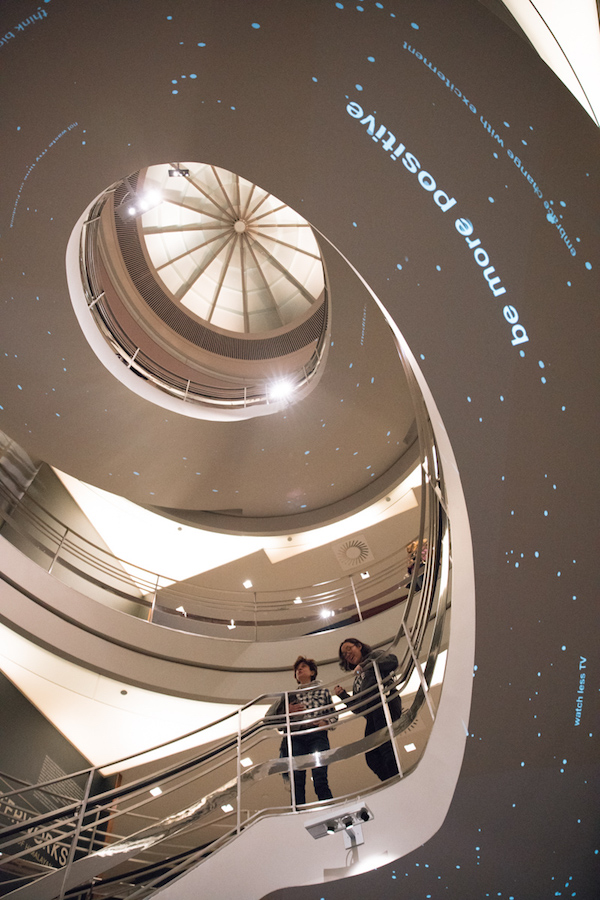
The Rubin, founded by Shelley and Donald Rubin, has been a center for the preservation and study of Himalayan art and culture since 2004. The subdued lighting that showcases the art, and the calm quiet punctuated with sounds from various exhibitions, gives those strolling through the museum the sense that they are ensconced in their own little world for the duration of their stay.
Greeting guests at the foot of the spiral staircase in the museum lobby is a chunky cylinder with a screen and keyboard at the top. This is The Wheel of Intentions, inspired by the Tibetan prayer wheel, created by Potion and Ben Rubin, based on a concept by the Rubin Museum.
Visitors type in their intentions, and when they are done, spin the rim of the cylinder (the “wheel”) clockwise to activate their intentions, and those of other people who have entered them online. The intentions are then projected onto the underside of the staircase, and move further up with each turn of the wheel. Ultimately, they will end up on the fifth floor as part of The Power of Intention exhibition. It is a fun, hands-on way to personalize the guest’s experience.
The first stop in The Power of Intention is a dark room with a circular bench situated between two screens with the collected intentions scrolling across. “It’s like being inside a giant prayer wheel,” said Elena Pakhoutova, Ph.D., curator of Himalayan art for The Rubin. “In all of this cosmic soup, I call it, floating around.”
The museum provides a video compilation of different kinds and sizes of prayer wheels for those who are unfamiliar with the concept. There are handheld prayer wheels to be spun as people walk, tabletop prayer wheels to turn as one passes by, and massive prayer wheels requiring multiple people working together to release intentions. There is also an opportunity to use a prayer wheel to get the feel of it. Great care went into providing concrete examples to enhance people’s understanding and enjoyment of the exhibition.
“What the exhibition is, actually, is a conceptual deconstruction of this idea of the prayer wheels in order to demonstrate power of mind,” said Pakhoutova. “We were thinking about how to explore power of mind for our annual theme of power. It was hard to come up with something that was immediate, and tangible, and very clear, because it’s all very abstract. Then I thought that the prayer wheels are very good examples of the intention and the power of intention.”
The idea has been in the works since late 2017, moving from a collective brainstorm about the idea of power in general, to Pakhoutova beginning her search for artists who would be good for the show. She came up with five concepts that directly relate to the power of intention, which then became the five main sections of the exhibition.

“That’s why we call it reinventing the prayer wheel,” said Pakhoutova.
As visitors wend their way through, they will pass through representations of The Power of Intention and Commitment, The Power of Belief, Activation, Cumulative Power, and The Power of Repetition and Release. Throughout each section, the contemporary art works are paired with prayer wheels ranging from the elaborate and bejeweled, to the simple and utilitarian, as well as centuries-old paintings from Tibet.
The Power of Commitment is primarily represented by the work of Nepalese artist Youdhisthir (Youdhi) Maharjan, who works with reclaimed book pages, although that does not accurately represent the breathtaking detail of his work. It is intricate, time-consuming, and for him, meditative. Whether he has cut out every single letter and punctuation mark and re-glued them in concentric circles as in Committed to Becoming, or excised everything but the letter “O” while whiting out and leaving only the connections in a pattern akin to networks of neurons as he does in Power of Thought, his work must be seen up close.
Maharjan’s emphasis on the letter “O,” which also stands for “zero,” refers to the notion in Hinduism and Buddhism that nothing exists by itself. Pakhoutova explained, “For intention to actually manifest into something like an action, to have an effect, you have to have power or will. Intention without will is just a wish.”
The Power of Belief stresses that you must actually believe something is happening when you turn the prayer wheels, and includes pieces like Colombian artist Monika Bravo’s Landscape of Belief, a series of glass panels onto which animated images of cityscapes created out of the text from the book Invisible Cities is projected. The subject matter of the book, that of Marco Polo describing cities from memory to Chinese emperor Kublai Khan, who will never see them, aptly depicts the idea that our beliefs make our environment.
People will be able to hear Activation before they see it. In a separate room, a suspended fabric with a mirror on one side is set up in the center of the space. Pressing on the fabric creates colors on the screen and the wall, and the person activating it can see their reflection looking back among the colors, and hear the sound that their touch has unleashed.
“For the prayers and the mantras to be released, you have to physically engage the wheel, and so this really demonstrates the power of touch for activation,” Pakhoutova said of the piece, titled Metamorphy, created by a French duo who goes by the artist name of Scenocosme.
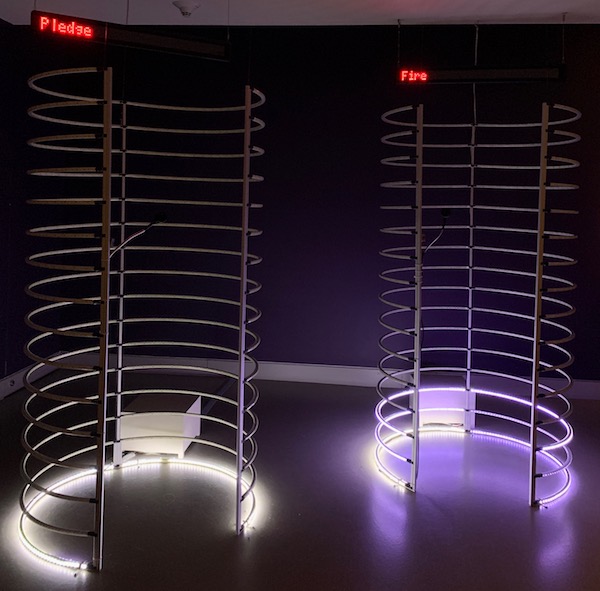
The concept of Cumulative Power hearkens back to the mention of prayer wheels that require several people working in tandem to turn them. In the eye-catching piece Breathless, by Alexandra Dementieva, two light sculptures are connected to the internet and are searching 50 different news outlets, RSS feeds, and podcasts for specific terms. On the left, the words sought are related to intention, and on the right, the words are related to power. As a word becomes more prominent in the search, the rings composing the sculpture light up.
Where this piece plays into cumulative power is the anemometer, which uses breath to scramble the input. “I exert my individual power over the collective input, so it’s collective versus individual,” said Pakhoutova. “But again collective is, in a way, input of multiple individuals.”
The final portion of the exhibition is The Power of Repetition and Release, referring to the repetition of mantras and how they are released into the world. In Spiral Incense, Charwei Tsai wrote mantras on three large, but delicate pieces of spiral incense. The incense is an indigo color, with the Tibetan mantras in silver ink. This is different from the usual appearance of the incense, which is typically the color of earth, with Chinese mantras written in black ink. The incense is meant to be burned to disperse the mantras.
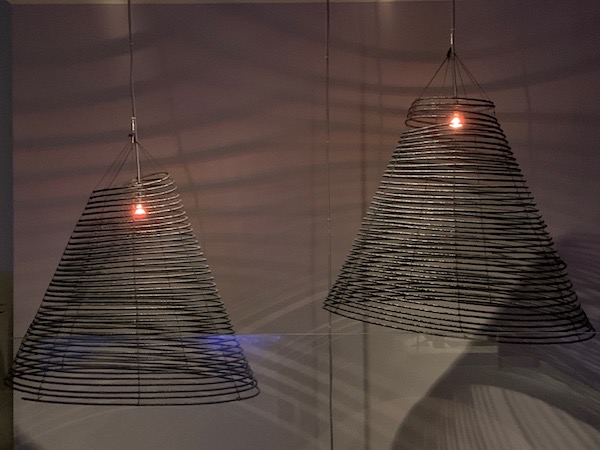
“When they are burned and there are mantras on them, the burning also releases the mantras into the world with all of the five elements,” said Pakhoutova. “There is space, wind, fire, earth, and water in the ink, so all of the elements are involved in the release of this mantra.”
Because of this, the incense is not a typical art piece that can be stored or thrown away. When the exhibition ends in October, those who have signed up will receive an email to come pick up a piece of the incense to burn at home so the mantras can be released with positive intentions.
That Spiral Incense is the final stop in the exhibition is apropos, as its burning will bring visitors full circle from giving The Wheel of Intentions a spin as they first entered the museum.
“In Buddhism in general, intention is a very important part of mental action, which is also a karma—a mental karma—and it defines the eventual outcome of any action we take, whether it’s a verbal or physical action,” said Pakhoutova. “Without the intention, the action doesn’t have positive or negative connotation. That’s why intentions have power.”
The Power of Intention: Reinventing the (Prayer) Wheel will run through October 14. The Wheel of Intentions will be on view through January 6, 2020. You can see these exhibitions for yourself Monday and Thursday from 11am to 5pm; Wednesday from 11am to 9pm; Friday from 11am to 10pm; and Saturday and Sunday from 11am to 6pm. The Rubin is closed on Tuesdays. Adult admission is $19. Seniors get in free every first Monday of the month, and pay $14 otherwise. Admission for students and visitors with disabilities is $14. Members and children 12 and younger are free. To sign up to be notified to take a piece of Spiral Incense to burn at home, ensuring that the mantras are dispersed respectfully and with positive intentions, go to rubinmuseum.org/incense.
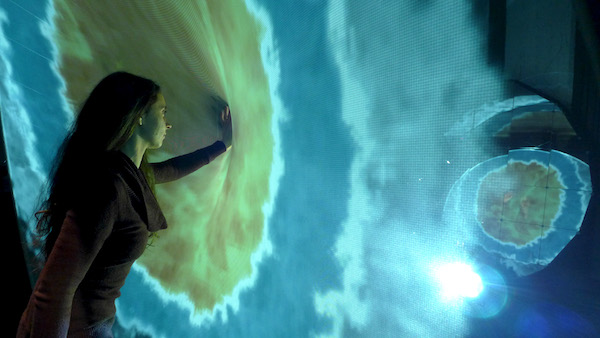
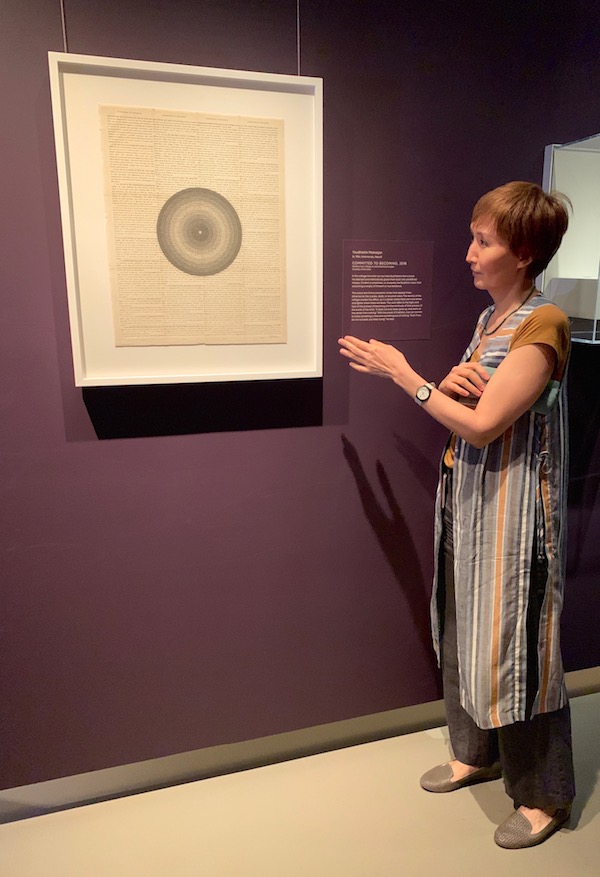
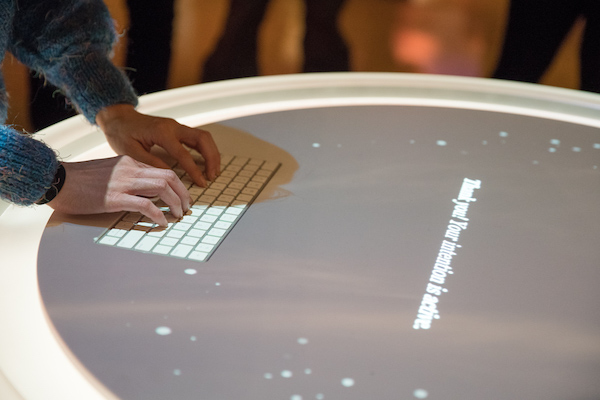
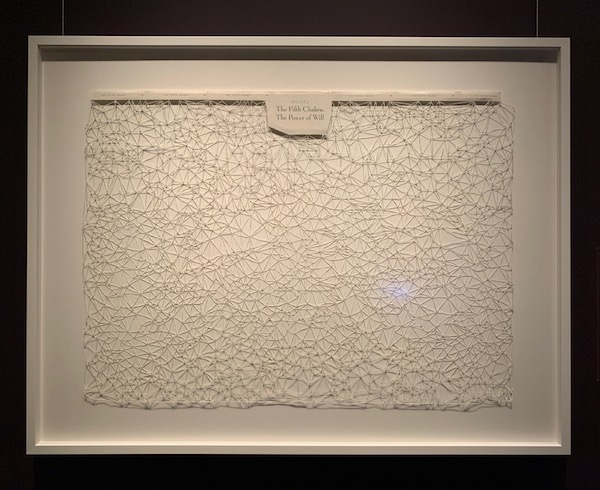
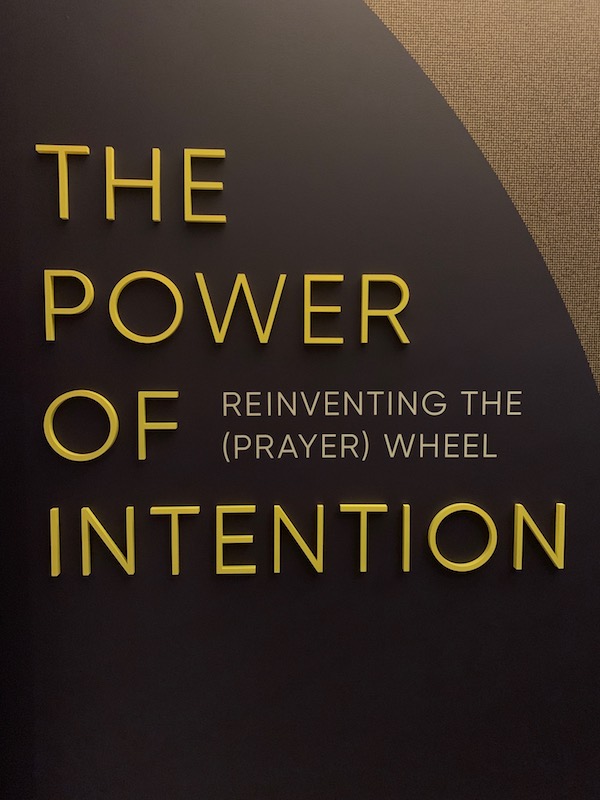

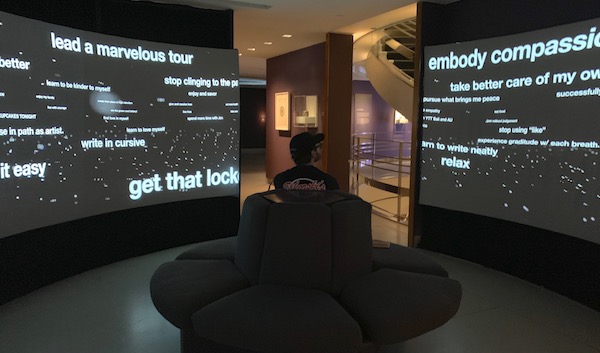
Chelsea Community News is made possible with the help of our awesome advertisers, and the support of our readers. If you like what you see, please consider taking part in our GoFundMe campaign (click here). To make a direct donation, give feedback about the site, or send a Letter to The Editor, email us at Scott@chelseacommunitynews.com.

Pingback: เรียนถ่ายรูป
Pingback: วิธีเปิดบัญชี forex
Pingback: buy rifles online
Pingback: check this out
Pingback: 다시보기
Pingback: nebenwirkungen arimidex
Pingback: magic mushroom types australia
Pingback: คลินิกความงาม นครศรีธรรมราช
Pingback: marijuana withdrawal symptoms
Pingback: useful source
Pingback: buy remingtonarms buy ssauerfirearms buy bergara arms guns buy chippa guns buy magnum research guns benelli firearms guns buy night hawk custom guns buy howafirearms guns buy stoeger guns
Pingback: cliquez pour plus
Pingback: Study in Africa
Pingback: 토토포켓몬
Pingback: 승무패
Pingback: stop screenshot
Pingback: second brain template
Pingback: สล็อตวอเลท ไม่มีขั้นต่ำ
Pingback: sbo
Pingback: quality assurance salary
Pingback: UK escorts
Pingback: สล็อตวอเลท
Pingback: 레깅스룸
Pingback: Esport
Pingback: carding cc
Pingback: บาคาร่า วอเลท
Pingback: What is pair programming?
Pingback: relx
Pingback: agen dewaqq terpercaya
Pingback: Glo Extracts
Pingback: Exhaustare
Pingback: DevOps Solutions
Pingback: kurumsal sunucu servisi
Pingback: exchange online fiyat
Pingback: Guns For Sale
Pingback: it danışmanlık hizmeti
Pingback: exchange online fiyat
Pingback: eBay music discount
Pingback: Darknet Links